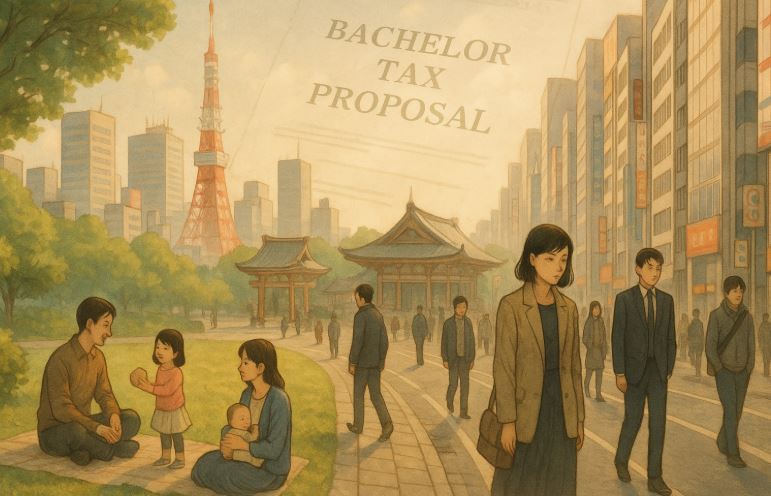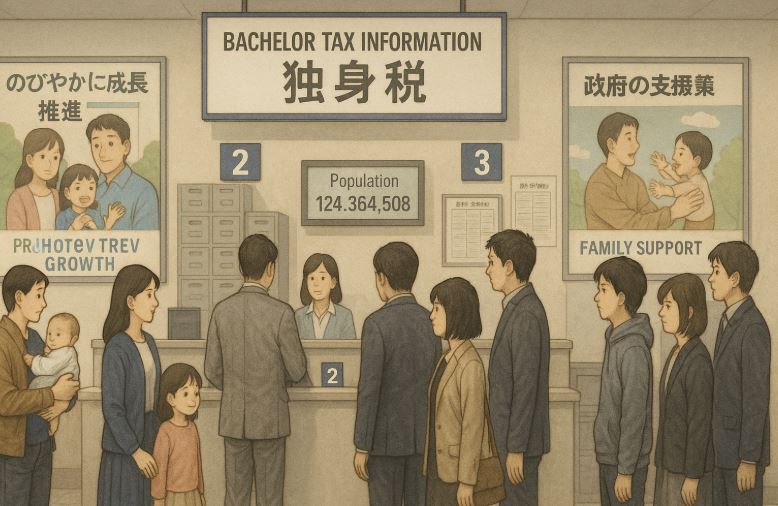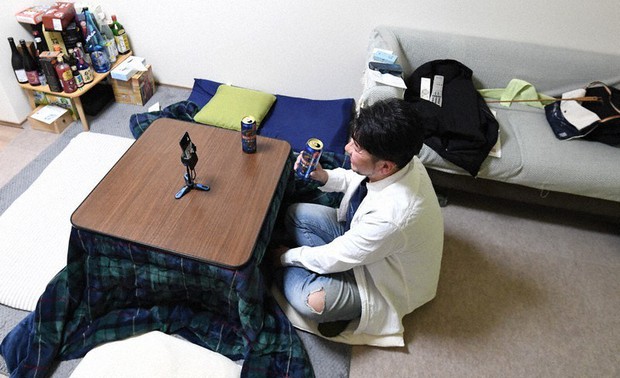A Nation at a Crossroads Amid a Demographic Crisis
Japan is once again in the spotlight over a newly coined and hotly debated phrase: the “bachelor tax.” Though sarcastic in tone, the term encapsulates the growing backlash against the Japanese government’s proposed Children and Child-Rearing Support Fund, set to take effect in April 2026. At its core, this policy is a response to the country’s deepening demographic crisis, driven by a youth culture increasingly characterized by “three-no-isms”: no dating, no marriage, and no childbirth.

A Crisis of Shrinking Numbers
Japan’s demographic decline is reaching alarming levels. In 2024, the national birth rate dropped below 1.2—a historic low. If the trend continues, the population will shrink from its current 120 million to around 87 million by 2070. This sharp decline threatens to spark severe labor shortages and strain, if not collapse, the country’s social security systems.
The Government’s Countermove: Children’s Future Strategy
To confront this looming threat, the government has introduced an ambitious plan: the Children’s Future Strategy. This initiative aims to boost birth rates by increasing child allowances, building more childcare facilities, and providing educational subsidies. The goal is to ease the financial burden of raising children and incentivize marriage and parenthood.

This sweeping policy comes with a hefty price tag: 3.6 trillion yen annually (about 180 billion Chinese yuan). The government plans to fund it through a three-part strategy:
1.5 trillion yen from the existing national budget
1.1 trillion yen through fiscal reforms
1 trillion yen (around 50 billion yuan) to be raised via the new Children and Child-Rearing Support Fund, collected directly from the public.
The goal, as officials put it, is to “raise the flowers of the nation together”—a poetic call for shared social responsibility.
How the Fund Works — And Why It’s Controversial
Beginning in 2026, both citizens and businesses—including foreign residents working in Japan—will be required to contribute to this fund through surcharges on medical insurance. The surcharge is expected to increase gradually:
- 2026: ¥250–¥450 per person/month
- 2027: ¥350–¥550 per person/month
- 2028: ¥450–¥700 per person/month
For reference, a salaried worker earning ¥4 million annually would contribute approximately ¥7,800 per year (roughly 388 yuan) by 2028.
In return, children from birth to age 18 will receive about ¥3.52 million in total living subsidies—an increase of ¥1.46 million over existing support levels. On paper, this appears to be a significant win for families.
“Bachelor Tax” Backlash: More Than Just a Hashtag
Despite its benefits, the proposal has drawn sharp criticism—especially from single and childless individuals. The phrase “bachelor tax” first gained traction on social media platforms like X, where users expressed frustration:
“I’m single—why should I pay to raise someone else’s kids?”
“Young people are already struggling. Now we’re being penalized for not having children?”

The resentment is rooted in two major issues:
Unequal Benefits
Critics argue the policy’s benefits are highly concentrated. Only families with children will see direct returns, while single individuals and childless couples are still required to pay. For many already deterred from marriage or childbirth due to financial concerns, this feels like an unfair added burden.
Controversial Language
The government's choice to label this fee a “support fund” rather than a “tax” has sparked psychological backlash. In Japanese, the word “support” implies goodwill or voluntariness—yet this fee is mandatory. Many believe that had the government simply called it a tax, it might have avoided the perception of moral coercion and deception.
The Timing Couldn’t Be Worse: Inflation Adds Fuel to the Fire
Public discontent is further fueled by rising inflation. As of May 2025, the Consumer Price Index (excluding fresh food) in Tokyo rose by 3.6% year-on-year—its highest since January 2023. Particularly shocking was a 93.7% surge in rice prices. Against this backdrop of higher living costs, even a seemingly modest surcharge feels burdensome, especially to low-income earners and single individuals.

A Delicate Balancing Act
Japan now finds itself at a crucial turning point. The need to address the low birth rate is undeniable, and collective action is essential. Yet this effort must not alienate or unfairly burden those who are already struggling.

The true challenge lies not in whether to support children and families—but how to do so without deepening social divisions. Rebuilding trust between the government and its people, ensuring fairness, and promoting inclusive solutions will be key to navigating this demographic crisis.
In short, Japan must ask itself: How do we build a future together—without leaving some behind?
Related Articles
You may also like...
International Hostess Bar Since 1993
夢
ORIGIN
・ International Hostess Bar since 1993
・ Japanese Hospitality with International Service
・ Diverse and Charming Floor Ladies
・Located in Shinjuku, Tokyo
・Transparent Pricing
・Easy Online Reservations




















